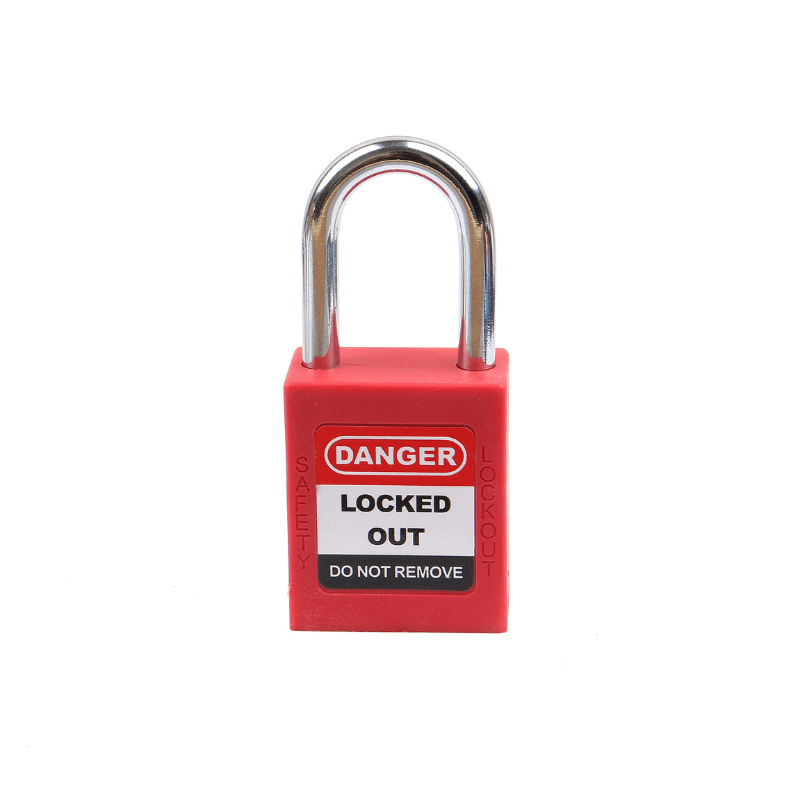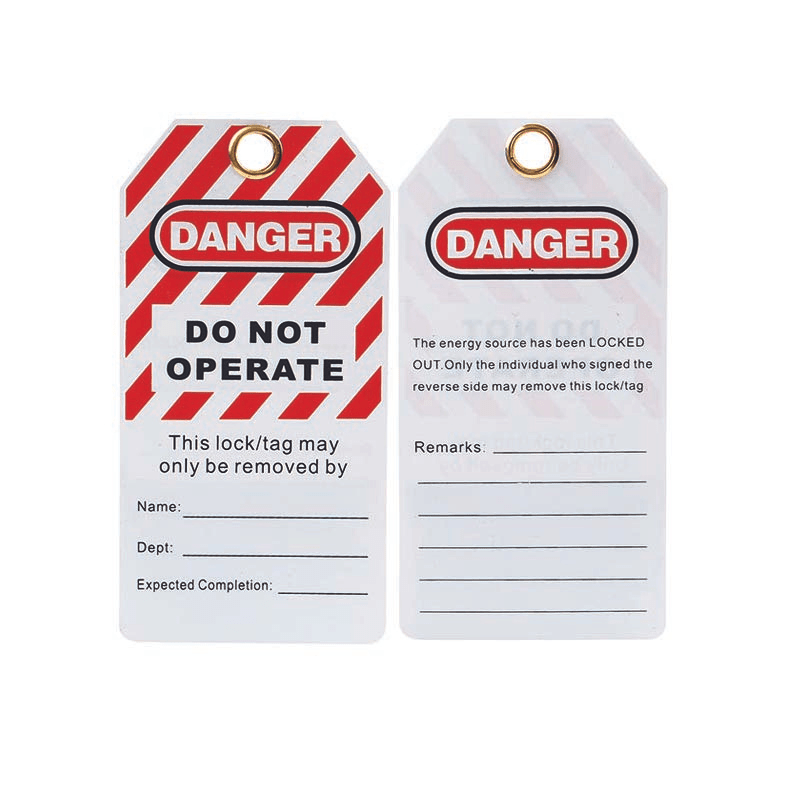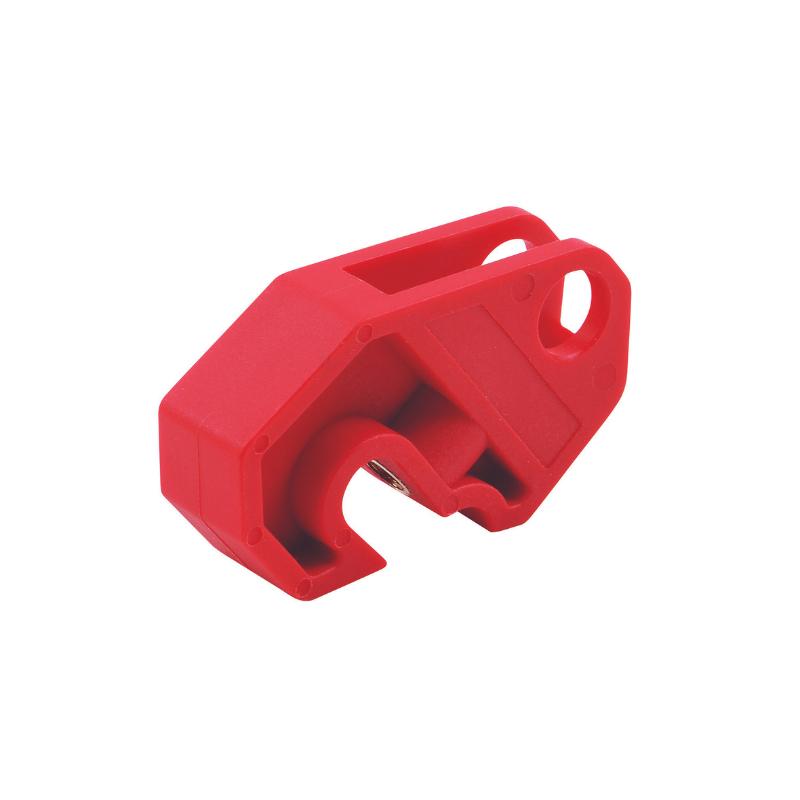What is Lockout/Tagout?
Lockout/Tagout (LOTO) is a procedure for the safe shutdown of machines or equipment during maintenance and repair work. It involves disconnecting the power supply, blocking potentially hazardous energy sources, and attaching warning signs or tags to ensure that workers are protected from accidental startup.
Why is Lockout/Tagout important?
The primary goal of Lockout/Tagout is to prevent workplace accidents caused by the unexpected startup of machines or equipment. By properly shutting down and blocking energy sources, dangerous situations are avoided while work is being carried out on the machine. This is especially important as accidents related to unexpected startup often result in serious injuries or even fatalities.
What are the necessary steps for a safe Lockout/Tagout procedure?
- Identification of energy sources: Ensure that all energy sources, including electrical, hydraulic, and pneumatic systems, are identified and documented.
- Power shutdown: Turn off the machine or equipment and disconnect it from all energy sources.
- Blocking energy sources: Use appropriate devices such as shields, valves, or locks to ensure that no energy can flow to the affected parts.
- Attaching warning signs/tags: Place visible warning signs or tags on the machine or equipment to warn other workers against switching it on.
- Verifying the shutdown status: Ensure that the energy sources are indeed shut down and blocked by attempting to switch on the machine.
- Performing maintenance work: Once the Lockout/Tagout procedure is complete, safe maintenance and repair work can be carried out.
- Removing Lockout/Tagout devices: After the work is done, all devices used to shut down and block the energy sources must be removed before the machine or equipment is put back into operation.
It is important that all employees are informed of these steps and can correctly perform the Lockout/Tagout procedure. Regular training and refresher courses should therefore be part of a company's safety program.
Another important aspect is the proper labeling of energy sources. All switches, valves, or other control points should be clearly marked to avoid confusion. Lockout/Tagout devices must also be clearly labeled and documented.
In addition to complying with safety regulations, it is also important to foster a culture of safety in the workplace. Employees should be encouraged to report potential hazards or suggestions for improvement to continually improve safety measures.
Overall, properly executing the Lockout/Tagout procedure not only helps prevent accidents but also improves efficiency and productivity in the workplace. It is therefore essential that companies take this procedure seriously and ensure that all employees can apply it correctly. Ultimately, the health and safety of all employees are of utmost importance.
It is never too late to implement or review the Lockout/Tagout procedure in your company. Take the time to ensure that your operational facilities are safe and that all regulations are being followed. A strong safety culture and proper application of procedures can help avoid accidents and ensure the well-being of employees.
In this regard, companies should always stay up to date and keep informed about new developments and guidelines related to Lockout/Tagout. This can be achieved through regular training or exchanging information with other companies.
The Benefits of Lockout/Tagout Systems
Lockout/Tagout systems offer a variety of benefits for companies that implement and use them correctly. Here are some of the key benefits:
- Accident prevention: The most obvious benefit of Lockout/Tagout systems is the prevention of potentially hazardous energy-related accidents.
- Improved safety culture: By implementing Lockout/Tagout systems, companies foster a safety culture that raises awareness of potential hazards and the importance of following procedures.
- Increased productivity: Although some issues related to maintenance or repairs may arise, overall efficiency is improved.
- Compliance with regulations: Lockout/Tagout systems are legally required in many countries to ensure workplace safety.
- Employee protection: Lockout/Tagout systems also protect employees from possible injuries or even fatalities.
- Cost savings: While implementing a Lockout/Tagout system may initially involve costs, companies can save money in the long run.
- Protection of equipment: Regular maintenance and repairs enabled by Lockout/Tagout systems also improve the condition of equipment.
- Promotion of a positive corporate culture: By prioritizing the safety and health of their employees, companies can foster a positive corporate culture.
- Continuous improvement: Lockout/Tagout systems require regular reviews and updates to ensure they remain effective.
- International standards: There are also international guidelines and standards for Lockout/Tagout systems developed by organizations like the International Labour Organization (ILO).
Overall, Lockout/Tagout systems play a crucial role in ensuring the safety of employees and equipment in companies. They not only prevent accidents but also reduce costs, promote corporate culture, and lead to continuous improvements. It is therefore important that companies implement these systems and regularly review them to ensure workplace safety.
This includes regularly training employees on how to use Lockout/Tagout systems and adhering to international standards. Only through a comprehensive safety concept can companies minimize potential hazards and ensure the health and safety of their employees.
The Components of a Lockout/Tagout System
A Lockout/Tagout system consists of various components that work together closely to ensure a safe working environment. Here is an overview of some of the key components:
- Locks: These are special padlocks or other devices used to block energy sources and thus shut down machines and equipment.
- Warning signs and tags: These serve as visual warnings for employees, indicating that a machine or equipment is locked out and should not be operated.
- Lockout kits: These kits contain all the necessary components for implementing a Lockout/Tagout system, including locks, tags, and locking accessories.
- Training and instruction: Regular training of employees on how to use Lockout/Tagout systems is an essential component. Here they learn how to use the systems correctly and what dangers can arise when working with machines.
- Policies and procedures: Clear guidelines and procedures for performing Lockout/Tagout are also crucial for workplace safety. These should be regularly reviewed and updated to ensure they meet current standards.
- Documentation: To ensure compliance with the guidelines and procedures, it is important to document all Lockout/Tagout measures performed. This can help identify potential gaps in the system and make improvements.
Together, these components form a comprehensive Lockout/Tagout system that helps prevent workplace accidents and injuries. It is important that all employees understand how to use this system correctly and that it is regularly reviewed and updated.
In addition, there are various methods for isolating energy sources that can be used in conjunction with the Lockout/Tagout system. These include, for example:
- Gravity switches: These devices interrupt the flow of energy through a circuit that is activated by movement or a change in weight.
- Pneumatic clamps: They use compressed air to block the energy source, making maintenance safer.
- Blocking valves: These are used to stop the flow of liquids or gases, making machine maintenance safer.
It is important to choose the appropriate method of isolating the energy source based on the type of machine and the work area. A thorough risk assessment should be conducted to determine the most suitable methods.
It is also important that all employees are regularly trained and informed about the latest guidelines and procedures in the area of Lockout/Tagout. A well-informed workforce can help prevent accidents and create a safe working environment.
Implementing Lockout/Tagout on Machines
Implementing Lockout/Tagout on machines requires a systematic approach to ensure the safety of employees during maintenance and repair work. First, a comprehensive analysis of all machines used in the production process should be conducted to identify potential hazards. Then, specific Lockout/Tagout procedures must be documented for each machine, detailing the steps needed to isolate energy sources.
The responsibility for complying with these procedures should be clearly assigned, and regular training should be provided to ensure that all employees understand and follow the processes. Additionally, it is essential to regularly check the condition of Lockout/Tagout devices to ensure they are intact and functioning correctly. Continuous monitoring and improvement of Lockout/Tagout procedures contribute to creating a safe working environment and minimizing the risk of accidents.
Choosing the Right Lockout/Tagout System
There are various types of Lockout/Tagout systems, and they should be selected based on the specific requirements of the company and the machines. For example, some companies may use a locking system where each employee has an individual lock that only they can open.
Other companies may prefer a group lock system, where multiple employees can work on a single lock. It is important that the chosen system is effective and easy to use to ensure it is correctly applied.
Additionally, when selecting a Lockout/Tagout system, the potential energy sources and types should be considered. Some systems are specifically designed for electrical installations, while others are suitable for pneumatic or hydraulic machines. It is important that the chosen system covers all relevant energy sources and allows employees to isolate them safely.
Another factor in choosing the right system is the ability to provide information on the tag. Some companies prefer tags with pre-printed warnings, while others may need to include specific information on the tags. The size and visibility of the tags should also be considered to ensure they are easily recognizable.

The Role of Lockout/Tagout in Maintenance Safety
Lockout/Tagout is a crucial part of maintenance safety and helps ensure that employees are safe while performing maintenance on machines. It is important that all relevant steps of the Lockout/Tagout procedure are followed to prevent potential hazards.
A key part of this procedure is creating a list of all energy sources that need to be shut down and isolated. This list should be created by qualified personnel and regularly updated. Additionally, employees should be trained on how to correctly apply the Lockout/Tagout system and what steps to follow during maintenance.
The Lockout/Tagout procedure should also be integrated into the company's overall safety concept. This means that all employees should be informed about the procedures and regularly checked for compliance. Clear communication and collaboration among all employees are crucial to ensuring the Lockout/Tagout system works effectively.
Employer Responsibilities in Lockout/Tagout
Employers have the responsibility to create a safe working environment for their employees. This includes the use of Lockout/Tagout procedures during maintenance work on machines. They must ensure that all necessary resources are provided to effectively implement the Lockout/Tagout system.
Furthermore, employers must ensure that all employees are adequately trained and educated to apply the system correctly. This also includes regular review of training and conducting refresher courses to ensure that all employees have the necessary knowledge to properly carry out the Lockout/Tagout procedure.
The Importance of Training and Information for Employees
Employees need to be informed about the risks and hazards associated with maintenance work on machines. They should also be trained on how to properly apply the Lockout/Tagout system to protect themselves and their colleagues.
In addition, it is important that all employees are regularly informed about changes or updates to the Lockout/Tagout procedure. This can be done through training or internal communication. Open communication between employers and employees is essential to ensure that everyone involved is aware of the latest safety measures and procedures.
The Importance of Audits and Reviews
To ensure that the Lockout/Tagout system functions correctly, regular audits and reviews must be conducted. These can be performed both internally and externally and should cover all aspects of the system, including employee training, the provision of necessary tools and materials, and the actual application of the procedure.
It is important to take these audits seriously and identify potential weaknesses or issues. By identifying areas for improvement, companies can continuously optimize their Lockout/Tagout procedures and further enhance safety for their employees.

The Role of Lockout/Tagout in Enhancing Workplace Safety
Implementing an effective Lockout/Tagout system is a crucial step in enhancing workplace safety. By correctly applying this procedure, accidents and injuries that could have serious consequences for employees can be avoided.
Moreover, a well-functioning Lockout/Tagout system can help reduce production downtime due to machine failures or workplace accidents. This not only saves time and money but also contributes to the health and satisfaction of employees.
Additionally, implementing a Lockout/Tagout procedure can help ensure compliance with regulations and standards. Companies are legally obligated to ensure that their employees are protected and that all necessary safety measures are in place. By having an effective Lockout/Tagout system, companies can meet these requirements while also building trust with their customers.
We are happy to support you. Contact us for a quote on secure locking solutions.



